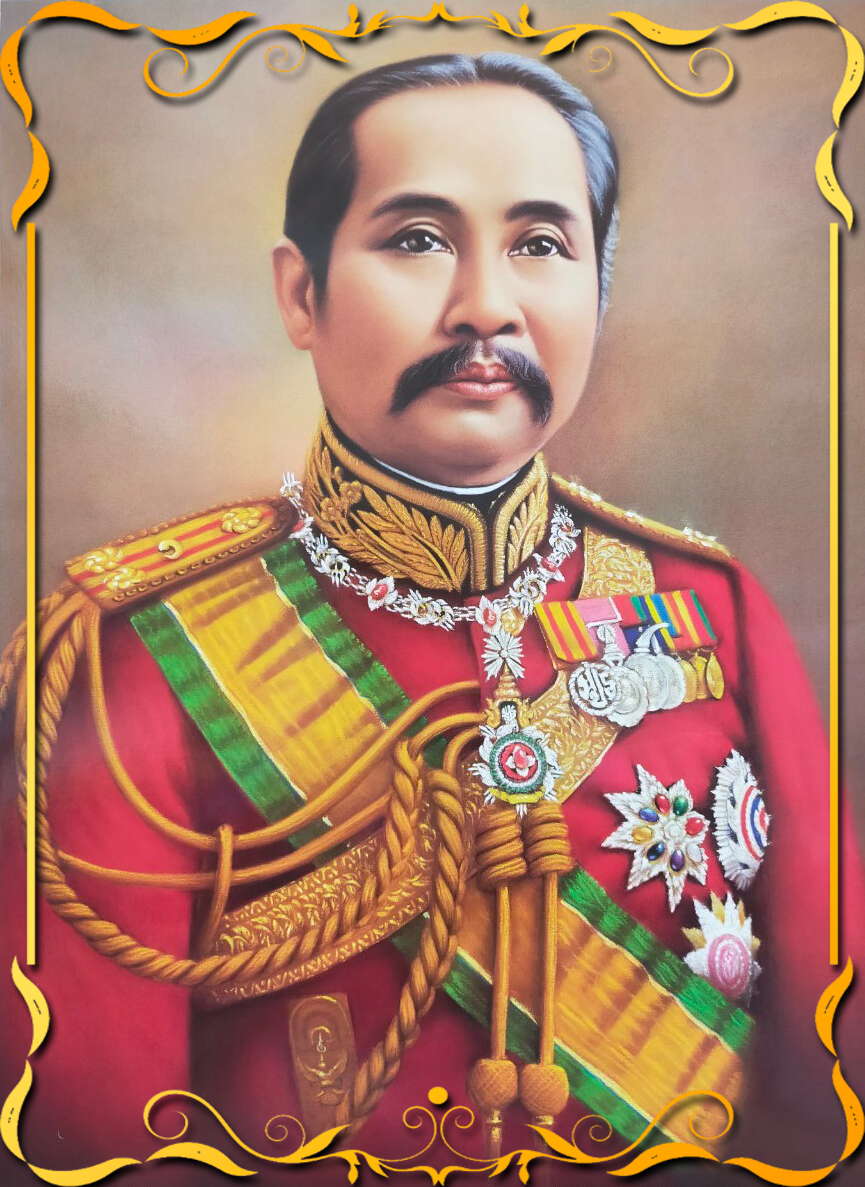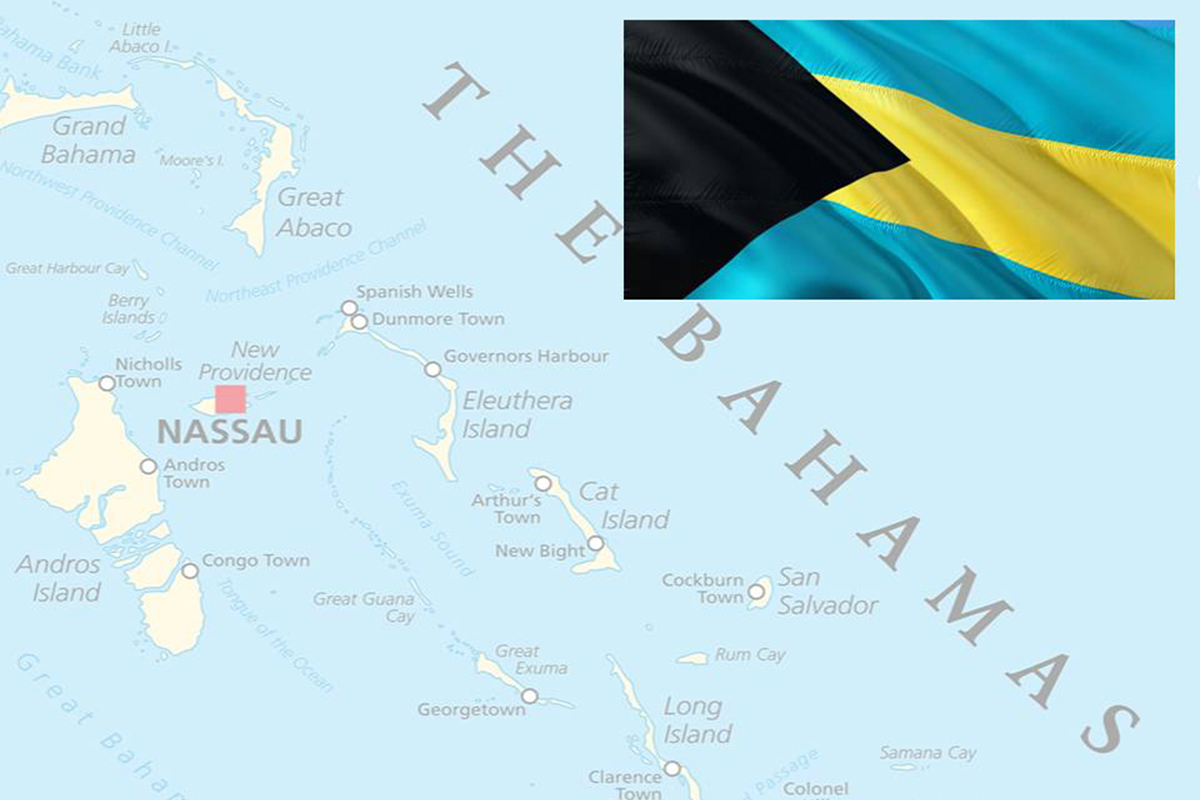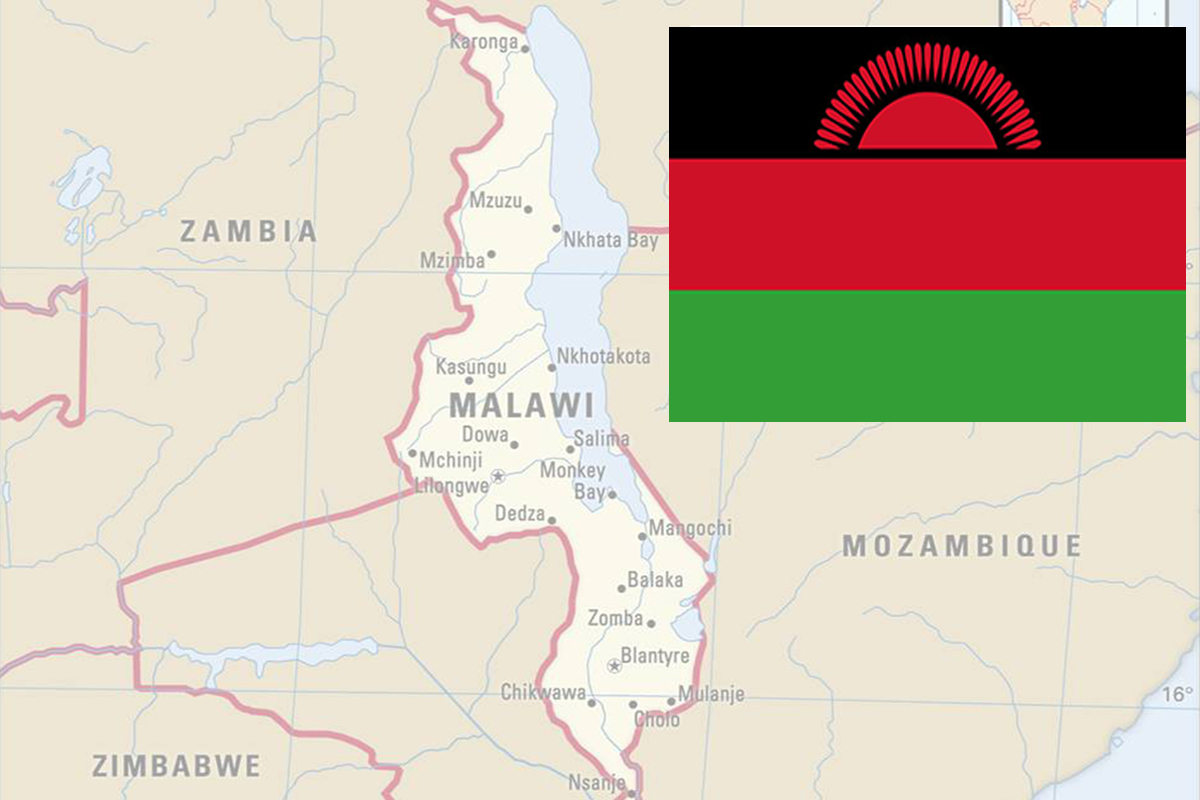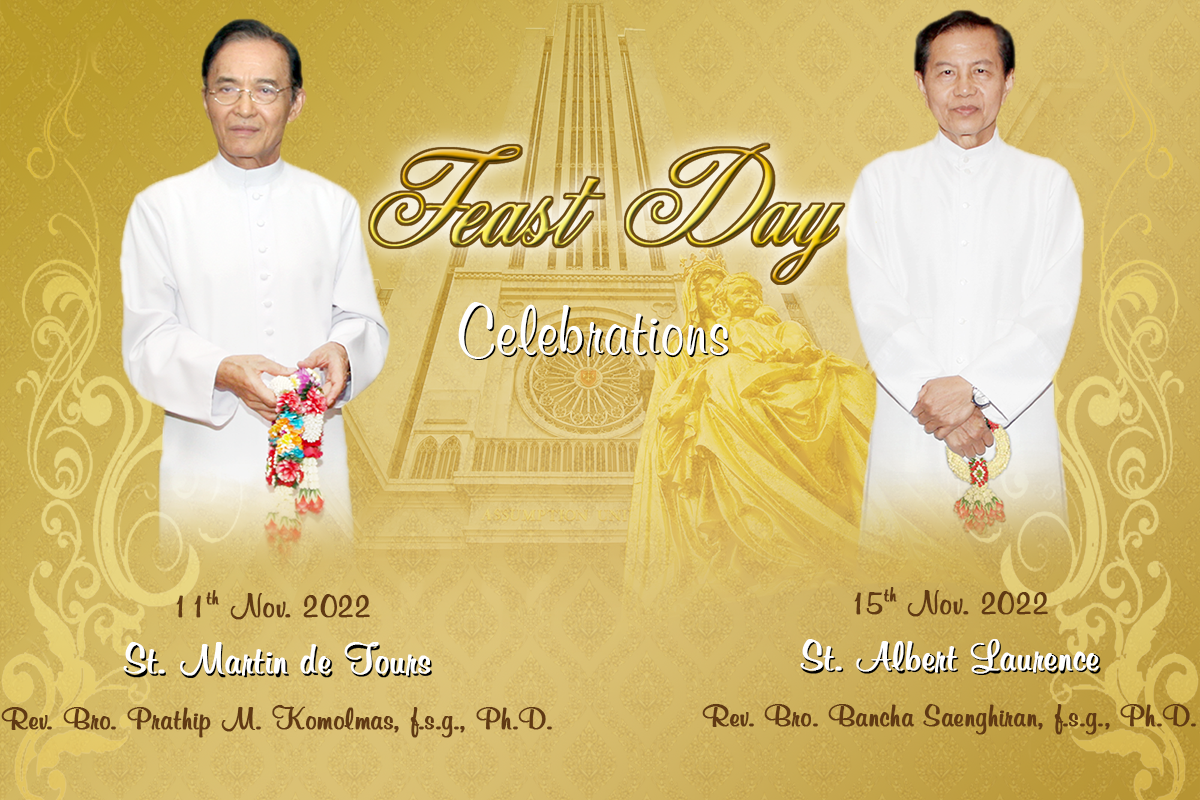
H.M. King Chulalongkorn
(King Rama V)
(1868-1910)
In 1868, King Mongkut died, Prince Chulalongkorn ascended the throne, King Chulalongkorn was born 20th September 1853, he was the eldest son of King Mongkut, and Queen Thepsirintra (Princess Rumpey Phamapirom).
During his boyhood, he learned to read and write Thai inside the Grand Palace, and taught by the Thai teacher, who also taught him royal traditions and palace etiquette, his father (King Rama IV) intended that the boy should have an early and thorough foundation in English for which purpose, King Rama IV employed Mrs. Anna Leonowens as a tutor of the royal children included Prince Chulalongkorn, and allowed wives of American missionaries coming in the Grand Palace to teach English to others.
At the age of 9, Prince Chulalongkorn was appointed on the royal title as Krommameun Piknes Surasunggat, and studied the wresting, the art of attack and defense with swords and wooden club by Luang Monyothanuyok including horsemanship was taught by King Mongkut. And at the age of 13, King Mongkut performed the tonsure ceremony for his son, King Mongkut himself cut off with golden shears the tuft of the hair from Prince’s head.
When Prince Chulalongkorn was 15 years of age, he was promoted to be Kromma Khun Pinit Prachanat, he was promoted to be Kromma Khun Pinit Prachanat, and entered the priesthood as a Buddhist novice. In 1868 King Mongkut died, and Prince Chulalongkorn ascended the throne when he was only seventeen years old, so it was necessary to have a Regent, the Chief Minister, Chao Praya Srisuriyawongse became the Regent and governed the country.
For the period of four years, before reigning the country, King Rama V took an apportunity to visit foreign countries, to study colonial government and western civilization. His first visits were to Singapore and Java (now Indonesia) in 1871, and later visited India. These were historic events, that no King of Thailand had ever left his country before (except in Sukhothai period, when King Ramkamhaeng visited China.)
His visits from which he gained enormously in the idea of development of his country, and realized that many things in Thailand were necessary to change from the undeveloped condition to the pattern of western civilization country. But he was sure that the ancient and original of his country could not be changed or done away with all at once, it should be kept as a symbol of Thai culture that dignified Thailand forever.
In 1873 when the King was 20 years old, he entered the priesthood for the period of fifteen days, he was the first King of Chakri Dynasty, who ordained as Buddhist monk, while he was on the throne. After he resigned his priesthood, he had his second coronation on 16th November 1873, and assumed the government, the King reformed some traditions which bringing up to the present ways, and became modern actions, the reformations were as follows.
 1. Abolition an act of Prostration, the prostration is the action of bowing down low and lyine face before a king, the King granted an audience to the people who could sit on the chairs or standing before the King.
1. Abolition an act of Prostration, the prostration is the action of bowing down low and lyine face before a king, the King granted an audience to the people who could sit on the chairs or standing before the King.
2. Changing the old tradition of rightful succession to the throne. In the former times, at the beginning of Bangkok period, the King nominated the second king, that called in Thai as “Krom Phrarajwangborvorn”, the second king might be the younger brother of the king, for example in the reign of King Rama I, the second king was Nai Boonma or Chao Phraya Surasih who was the younger brother of King Rama I.
In this reign, when Krom Phrarajwangborvorn Vichaichan (the second King) died on 20th August 1885, King Rama V had a royal command to abolish the position of the second king or Krom Phrarajwangborvorn, and he appointed the new position called Makut Rajkumal or Crown Prince, instead of the second king. In 1886, King Rama V established his son Prince Vachirunhit as the Crown Prince of Thailand, he was the first Crown Prince of Chakri Dynasty.
3. Changing the name of the official year, in the period of Ayuthaya, and the beginning of Bangkok period, we called the official year of Thailand as “Chul Sakarat" Chul Sakarat is the Era in official use in Thailand in the ancient times, it came from the great influence of Burmese culture, it had no meaning conerning Thailand.
The King changed from Chul Sakarat to Ratanakosin Sok, Ratanakosin is the name of the city of Bangkok, Sok means Era, Ratanakosin Sok meaning the Era dating from the founding of the city of Bangkok (Bangkok Era), it began from 1782, was the first year of Ratanakosin Sok. The change of Era, began in 1888, it was the year of Ratanakosin Sok 106 (RS. 106). The official day is fixed according to the solar system, and 1st April was the new year day, it began from 1st April 1889.
4. Abolition of the custom of shaving, at a previous time before the reign of King Rama V, when the king died, the people in Thailand showed sign of sorrowful manner by shaving off their hair by a razor. The King abolished the custom of shaving, and requested the people to show sign of mourning by wearing black clothing when the king died.
The Public Administration
For the state administration, the King considered that the Departments and Government Organizations at the time were inadequate to carry on the whole affairs of the country, it should be improved in the modern way for the sake of the well governed system of Thailand, the King established two councils,
1. Council of State, the Council of State is responsible for the duties as the counselor of the King, for state's affairs, the council consisted of the members of two categories (1) Ministers or their representatives (2) the persons that were nominated by the King not less than twelve persons
2. Privy Council, the Council is responsible for a private counselor of the King, the members of the council depended on the decision of the King. King Rama V said that the Council's purpose was to bring greater well being to the people.
For the administration reform, the King gradually improved the old government system of the country, at first he establisbed the government organization in the level of Department, and later lifted up to the level of Ministry and the official who was the chief of each Ministry was called "Senabordi" or Minister. At that time there were ten Ministries,
- Ministry of Interior.
- Ministry of Defence.
- Ministry of the Metropolis of Bangkok.
- Ministry of Foreign Affairs.
- Ministry of Finance.
- Ministry of the Royal House Hold.
- Ministry of Agriculture.
- Ministry of Justice.
- Ministry of Public Works.
- Ministry of Education.
For administration of the regional and local area of the country, the Ministry of Interior was set up in 1892, and the whole administration machinery was reorganized by the effort of Prince Damrong. The country was systematically divided into eighteen main divisions called in Thai word as “Monthons" or a group of provinces, and one Monthon was divided into provinces, a province to districts, sub-districts, villages.
The ruler of Monthon was named "Samuhathesapibal" or "Thesa” the ruler of province was called "Governor”, the ruler of district be headed by the District Officer (Nai Amphur), sub-district was ruled by the headman (Kamnan), and the village, a smallest community was ruled by the head of the village, this position was called Phuyaiban, and would be elected by vote. This system of local government is still carried on basically in Thailand to the present day.
In reform of penal and legal systems, the law of the country, and the rules made by kings, they were the ancient laws of the "Three Seals Laws”, which dated back as far as the period of Sukhothai and Ayuthaya. Some provisions of these laws, show sign of unjust and uncivilized treatment, they examined and deciding the criminal cases, the truth of the plaintiffs and defendant claims was decided by seeing which of the two could dive and stayed longer under water.
This practice for deciding the criminal case appears in the Thai literature book of Khun Chang Khun Phan, Phra Phanwasa the King of Ayuthaya, he decided the criminal case by the method of "Diving and Walking through fire" in order to prove one's guilty or guiltlessness. For the laws of Thailand should be revised to a modern legal system.
For the penal and legal systems, the King did not emphasize the English and French systems only, he appointed a General Adviser who was Belgian, Rolin Jacquemins, who supervised judicial administration with the help by foreign lawyers.
Another important helper was Prince Rabi, who had graduated at Oxford University, and who had late been appointed to be the Minister of Justice, and a School of Law was set up in this reign. The most significant law to be passed was the Criminal Law of 1909. Many other legal reforms had been carried out, and a provision was made for the training of Thai lawyers, so that it was not necessary be dependent on lawyers from abroad.
Reference:
Bhamorabutr, A. (1983). The Chakri Dynasty. Bangkok : D.K. Today.



